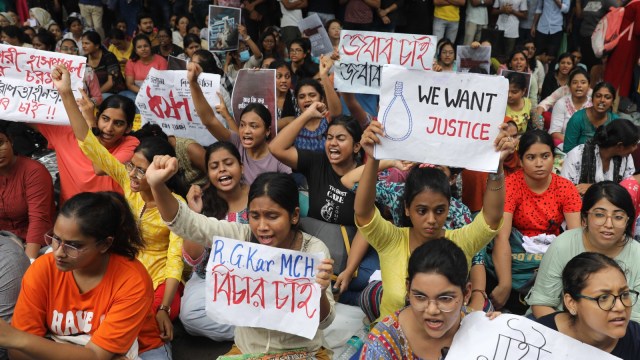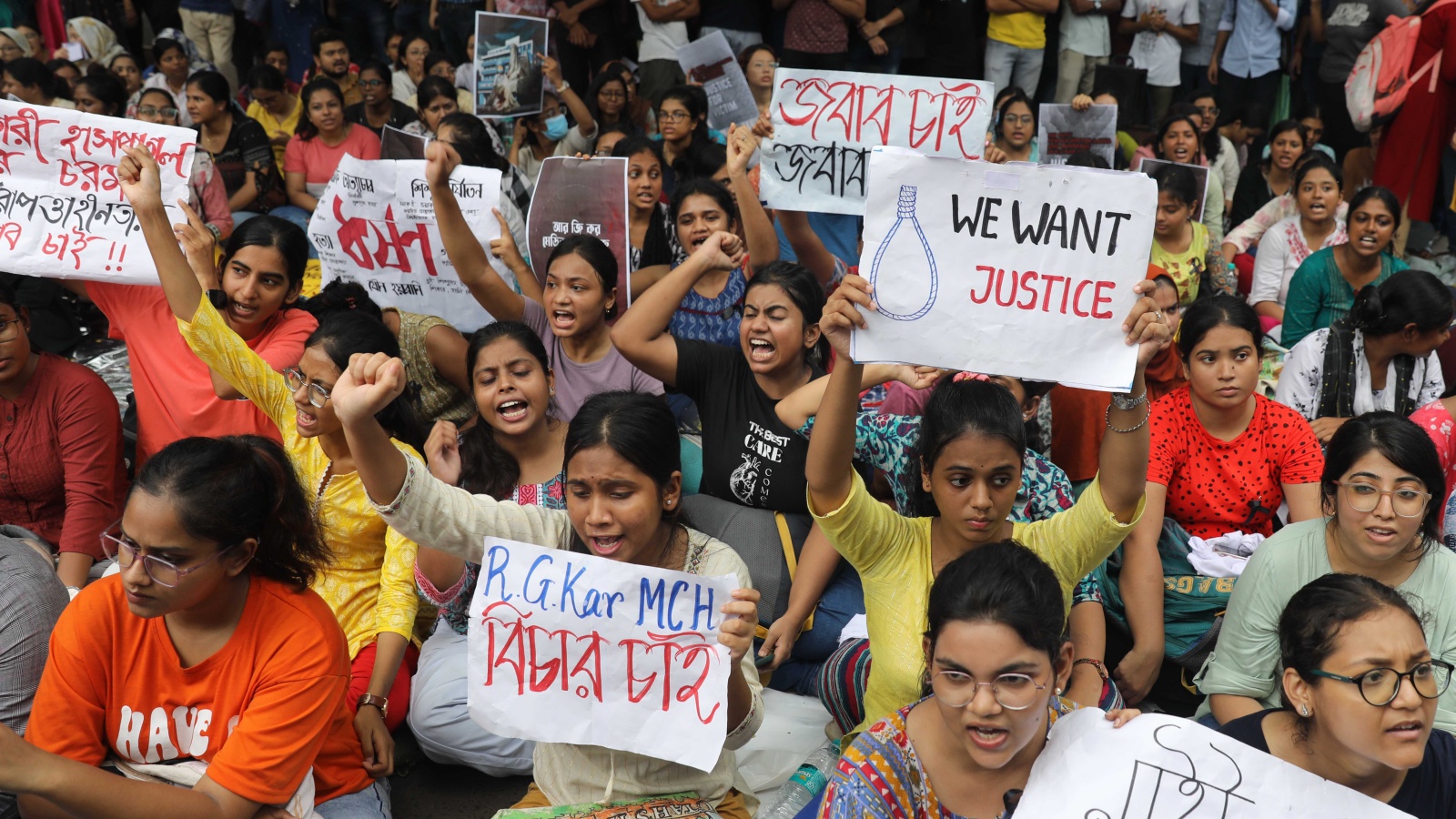
What is it that we talk about when we talk about rape? Cast your mind to any of the incidents over the last few months, years, decades — to Delhi 2012, Kathua 2018, Hathras 2020, Kolkata 2024 — and a pattern emerges. We speak of the horrors of violation — the laceration counts, the violence of the injuries, the degree of brutalisation. There is a reconstruction of the woman’s, girl’s, child’s last few hours before ignominy — the calls she made, the meal she had, the conversation with a family member or a friend — drawn out with lurid, cinematic flair. There is also, should it not be lost in the frequency of its occurrence, mourning for lost promise. And outrage, perhaps, if the dead or the dehumanised is lucky enough — ironically — to belong to a certain class, caste or society. Or, if it breaches the threshold of tired acceptance of the routineness of such incidents. In that instant, it transforms into a consumerist spectacle, a form of voyeurism that picks and chooses who deserves our moral outrage.
There’s a poem by Pulitzer Prize-winning American poet Kay Ryan that could speak for all the things we don’t talk about when we speak of sexual violence: “The room is/ almost all/ elephant./ Almost none/ of it isn’t./Pretty much/ solid elephant./ So there’s no/ room to talk/ about it.” What is this elephant then, the one that fills up the room, making conversation difficult? Women will tell you that it is the culture of patriarchy that makes perpetrators and enablers of men; that teaches them, women, their place in society, that writes anger and anguish into their stories. The National Crime Records Bureau’s 2022 report puts the number of reported rapes at around 31,000. Statistics about sexual violence is always unnerving but even then, the numbers fail to cover the breadth of harassment that forms the experience of every woman — the acid taste of fear in dark lanes, the frequent looking over one’s shoulders, the precautions of sharing cab routes with family, friend or partner at night; the self-censorship to deflect undue attention, the deception that one has been “luckier” than most; the deadlines that still fail to keep them safe. And this is only speaking for the urban, professional, middle class. Other, worse horrors, lurk for women who fall outside the privileges of this scaffolding.
There is a form of voluntary delusion that makes men who are part of the problem and women who excuse them perform mental calisthenics to ascribe cause and effect to sexual violence. These are the people who believe that women can avoid harassment if only they are less provocative, more submissive, less transgressive of the limits to their freedom. That it is “not all men” but only a handful who exist outside of one’s circles of familiarity. That it is on the woman to do better for her own safety. It is the kind of logic that looks at sexual violence as an inconvenience, a shajano ghotano — made-up story. Remember the initial scepticism from the state government that met Suzette Jordan, the 2012 sexual assault survivor in Kolkata’s Park Street. Or, Mulayam Singh Yadav’s opposition to capital punishment for rape in 2014 because men will be men — bristling with a kind of fragile machismo that finds it difficult to control itself.
This patriarchal discourse permeates all sections of society, typecasting women into adjunct tropes of mother, sister, wife or daughter. A woman is never just enough on her own. There has to be a mould that she fits into, to merit courtesy, to be deserving of respect. In Leslee Udwin’s documentary India’s Daughter (2015), for instance, shot in the aftermath of the December 2012 gang rape and banned in India on release, one of the perpetrators interviewed says, “A decent girl won’t roam around at night. A girl is more responsible for rape than a boy…”
In another form, this kind of belief transforms into the idea of the “ideal victim” — the one whose infraction matters more, is worthier of moral outrage and agitation. This is why a doctor’s rape and murder after a 36-hour duty becomes a flashpoint, while the rape and murder of a nurse in Uttarakhand goes unremarked on. The first calls for justice that is quid pro quo, violence for violence, death penalty for brutal depravity. The second recedes from public memory without effort.
In the aftermath of the R G Kar rape and murder, the West Bengal Chief Minister has written to the Prime Minister asking for stricter rape laws, including capital punishment, and fast-tracking courts for speedy trials. TMC’s general secretary Abhishek Banerjee has spoken of dealing with perpetrators “either through encounter or by hanging”. While timely prosecution of sexual offences is essential, after the December 2012 case, a watershed moment for gender justice in India, the Justice Verma Committee Report had argued that the death penalty’s potential as a deterrent was “a myth”, a regressive idea of retroactive justice. Women’s rights activists contend that it only serves as a populist knee-jerk reaction that ignores the larger implications of such violence. Irrespective, the Bharatiya Nyaya Sanhita has introduced it in rape laws.
The Verma Committee report had also emphasised the need to introspect on the overarching patriarchy that pins women down at every step, beginning with the family and extending up to the state. It brought in crucial police reforms and expansions to the definition of rape. But some of its other recommendations, especially a review of the immunity granted by the Armed Forces (Special Powers) Act to soldiers accused of rape in conflict areas, or the criminalisation of marital rape, continue to be ignored, pointing at larger abdications of state and society.
What do we speak of when we speak of rape? Not the power asymmetry that the Hema Committee Report details in the Malayalam film industry, that leaches women of professional opportunities, that silences them into compliance, that sits at the heart of all sexual violence. Not the fact that the language of legal recourse against gendered crimes is essentially masculine and majoritarian, that holds the woman to account even when it is arguing for her. For all the gains made by the MeToo movement, the deadweight of this crushing letdown “is solid elephant”. There is little room to talk about it.
paromita.chakrabarti@expressindia.com
© The Indian Express Pvt Ltd
First uploaded on: 27-08-2024 at 13:00 IST



